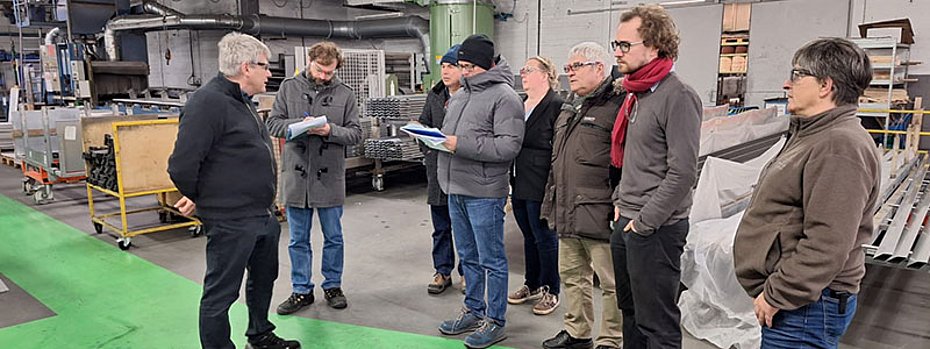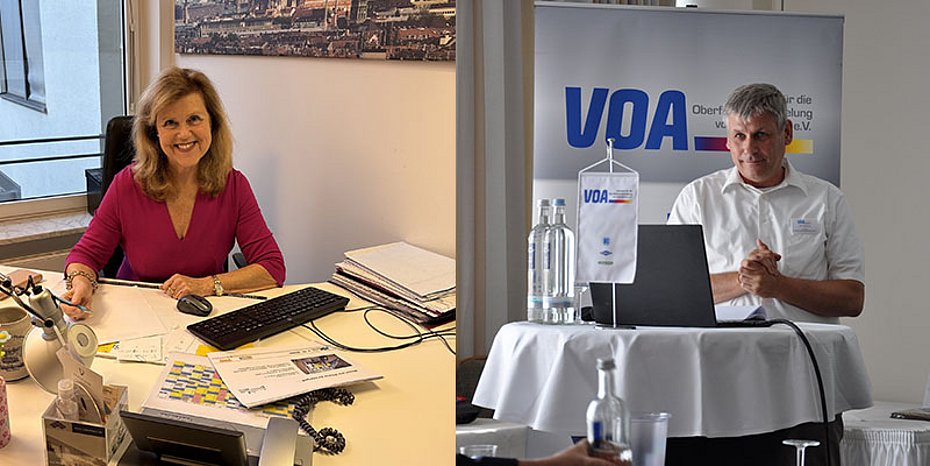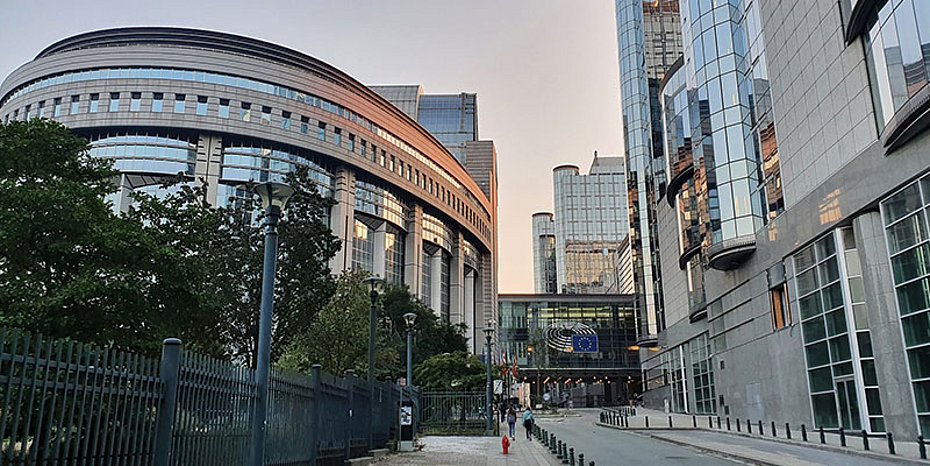The European Commission defines the current state of the art for almost all industrial sectors in the form of BREF documents (Best Available Techniques Reference or Best Available Techniques Reference Document). The BREF Surface Treatment of Metals and Plastics (BREF STM) contains the key regulations for the surface treatment industry. The planned update started back in 2021 with the active involvement of the German Aluminum Surface Finishing Association (VOA) and is still ongoing today. No wonder, because the regulation involves an incredible amount of work, both by the national expert group - in Germany under the leadership of the Federal Environment Agency (UBA) - and the European Technical Working Group, which compiles all the necessary information and data for the European Integrated Pollution Prevention and Control Bureau (EIPPC). Of particular importance: the collection of data from numerous, differently positioned EU companies, from which emission values will be derived in future that are to be implemented on a binding basis throughout Europe; supplemented by visits to selected companies, which naturally also include VOA member companies.
Visit by the BREF STM European delegation
In 2024, the BREF STM delegation visited a total of six companies in Germany, which the UBA had previously selected in consultation with the EU Bureau for Research on Industrial Transformation and Emissions (EU-BRITE). The aim: to gather background information and discuss issues relevant to the review. Coordinated by the VOA office, several member companies had agreed to receive the delegation and to answer questions. The planned visit to ALBEA Oberflächenbearbeitung GmbH, a member company of the VOA, took place.
The delegation paid particular attention to the emission values in air and water as well as their monitoring and the external disposal of residues in the form of concentrated sludge. They were also interested in the specific consumption of natural gas and electricity, which the company mainly uses for processes and cooling/heating and monitors to some extent. The visit showed that although the expected energy consumption for a specific part of the process can be predicted based on many years of experience, estimates are only accurate when focused on specific vats due to the wide and varying range of orders for different workpieces. The estimated total amount of surface treated varies by as much as 20 percent. In the end, there are also no precise figures available for the treated surface area in order to make a concrete calculation. This lack of precision makes it difficult to determine valid figures in practice and therefore also to comply with certain consumption limits. This is where reality and the more theoretical development of regulations that would actually have to be complied with come together.
New edition of the BREF STM taking realistic figures into account
It is therefore particularly important and an absolute concern of the VOA as a trade association for the industry to provide the delegation representatives with a deep insight into the practice of the companies through the company visit. This will provide valuable information on the technical conditions on site in order to formulate realistic, practicable requirements throughout Europe when updating the BREF STM. In the interests of the surface finishing industry, the VOA is looking forward to the new edition of the BREF STM, which provides the authorities with the basis for carrying out inspections in companies. The new edition is therefore of particular importance, as it will set standards in the future following approval. It is therefore particularly important that the new regulation standardizes realistic figures. VOA Managing Director Dr. Alexa A. Becker summarizes: "We would like to thank all VOA member companies who are participating and providing their input for the industry. This is the only way to formulate sensible regulations that can be complied with by the European economy. After all, it is ultimately about continuing to play an important role in the global market." (OM-3/25)
Interview and background information on the new edition of the BREF STM
Ralf Heitzelmann is Managing Director of Aalbea Oberflächenbearbeitung GmbH and Deputy Head of the Technical Commission of the VOA e. V.
1) What motivated you and your company to take part in the data collection and ultimately offer the delegation a tour of your company?
Our company has been involved in the VOA for many years to promote the interests of our industry in Germany. It is clear to us that the interests of medium-sized surface finishing companies can only be heard if we act as a strong association and actively participate in the legislative processes that are relevant to us. The fact that these processes are now taking place at European level certainly does not make things any easier. We expressly welcome the fact that the VOA is represented both at national level in the Federal Environment Agency's expert group and at European level in the working group in Seville by representatives delegated by the VOA. When the request came from the VOA, it was a matter of course for me that we would both participate in the data collection and be available for a site visit.
2. what topics came up during the factory tour?
During the delegation's visit, we were able to make it clear that the range of components, customer requirements and therefore also the process sequences that we successfully implement on our anodizing lines are anything but uniform, but rather differ considerably from one another. From small parts the size of a wedding ring to large parts up to six meters in length, everything is possible. It is therefore obvious that there are major differences in the required processes in terms of the chemicals used, the number and type of process stages and therefore also in terms of energy and water consumption. The participants were also interested in exhaust air and waste water treatment in our company, water and energy consumption as well as waste and waste water production. Another key question was to what extent and in particular how precisely we can measure the surface of the components we treat. As a contract processing company, we treat tens of thousands of different component geometries every year. In contrast to open profiles and sheet metal, it is virtually impossible to determine the effective surface of many technical components, i.e. construction parts, castings and hollow chamber profiles. Although we use the same but greatly simplified calculation approach every year, it allows us to evaluate the development of our energy efficiency compared to the previous year, for example. However, the inaccuracy of the surface area determined in this way is far too great to be able to deduce whether, for example, a consumption limit for water consumption in liters per m² of surface area has been met. The precision required for this would mean an immense amount of additional bureaucracy for us. In our opinion and that of the VOA, this applies to all contract processing companies.
3. how were the values received by the delegation in your company?
After the introductory discussion of the various topics in practice, the delegation participants had the opportunity to get their own first-hand impression during a tour of our company. The questions were answered in detail by myself, by our Environmental and Energy Management Officer Ms. Sturm and by the VOA. The feedback we received from the participants was consistently very positive, especially because they were able to engage not only with theory but also with practice.
4. what are your hopes for the new edition of the BREF STM?
It's not really a "new edition", but actually a first edition: while the previous BREF STM document from 2006 only had the character of a recommendation, the new BREF STM will contain legally binding specifications that the responsible authorities must and will require to be implemented. This affects all plants licensed under the Federal Immission Control Act and therefore the vast majority of our industry. Due to the very different processes in the plants, the individual plants, whose data was collected across Europe, are hardly comparable with each other. We therefore consider standardized consumption limits in absolute figures, for example as liters of water per m² of surface area, to be of little use: While they would represent an unattainable hurdle for some companies, they would be easily tenable for others and would therefore offer no incentive whatsoever to improve efficiency. We would like the authorities to take account of the individual circumstances in the companies and work with the companies to develop individual improvement plans with, for example, uniform percentage improvement targets. We are prepared to do this.
How does the update process work and who is involved?
In the run-up to a BREF revision, the industry experts at the Federal Environment Agency (UBA) set up the (Extended) National Expert Groups ((E)NEG) for each BREF and the so-called "Seville Process" begins. The NEG, the national committee for the revision, is made up of representatives of the authorities, while the ENEG also involves experts from industry, science and associations. The group meets at regular intervals under the leadership of the UBA and discusses the current status, upcoming work and possible positions on the individual steps in the process. It accompanies the entire BREF revision and thus directly supports the Federal Environment Agency, which represents the German position in the negotiations in Seville. The European Integrated Pollution Prevention and Control Bureau (EIPPC office - known as the "Seville office" for short because it is based in the city) acts as a neutral, technically competent body and is responsible for the planning and implementation of the new development and revision processes for BREFs (Best Available Techniques).
The BREFs are very comprehensive documents with a high information content. Plant operators and licensing authorities can use them as a guide. The conclusions and requirements contained therein are binding in all EU member states. They apply to new installations immediately after publication and to existing installations after four years at the latest. In addition to emission bandwidths and the associated emission reduction techniques, the BAT conclusions contain binding requirements for the approval and operation of installations in the respective sector. In German, the English terms for BAT reference documents and BAT conclusions - BREF (Best Available Techniques Reference Document) and BAT Conclusion (Best Available Technique Conclusion) - are quite common and are used interchangeably.
Sandra Leuthold from Department III 2.2 "Resource conservation, material cycles, minerals and metals industry" at the UBA and responsible for the STM BREF says about the revision of the BREF: "The industry associations such as the VOA play an important role in supporting the 'Seville process' at national level, as they form the interface to the companies, which provide their data for the derivation of future emission values by completing the extremely complex questionnaire. In addition, the associations coordinate the comments on the individual papers from Seville and can provide important impetus for supplementing the so-called BAT candidates with their extensive information on technologies currently in use as well as new technologies. I am very pleased about the lively participation, because this is the only way we can develop good positions."
► Further information at www.umweltbundesamt.de
Contact
Verband für die Oberflächenveredelung von Aluminium e. V. (VOA)
Haus der Bayerischen Wirtschaft
Max-Joseph-Str. 5
80333 München (Germany)
Phone: +49 89 / 5517 8670
Email: info@voa.de
www.voa.de
About the VOA
As a trade association, the Verband für die Oberflächenveredelung von Aluminium e. V. (VOA) forms the industry network of companies in the surface finishing of aluminum and other materials and promotes the economic, political and technical interests of its members at national and international level.



